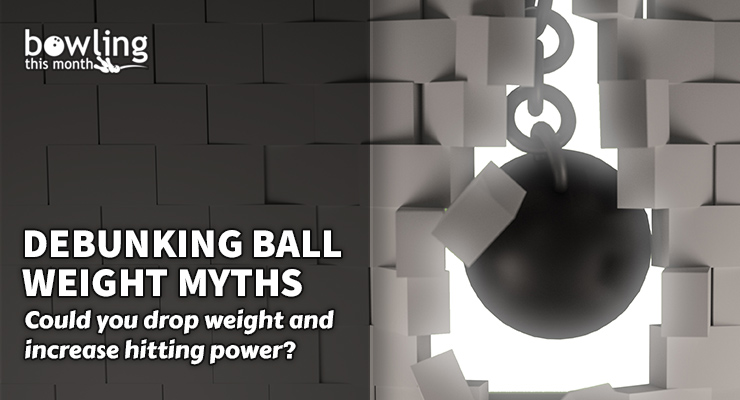Whenever I have a discussion about ball weight with a bowler, I think of Leonard Thieman. At the age of 76, I asked him if he thought he should give up using 16-pound equipment and switch to 15-pound balls. His response was a classic: “If I do that, what am I going to use when I get old?”
In this article, we’ll explore some of the commonly held beliefs regarding ball weight, and why most of these are misconceptions. It wasn’t all that long ago that 16 pounds was the standard for male bowlers. Not only was it standard, but there was also a sort of stigma toward anyone using 15 pounds or less. But the question is, with today’s modern cores and coverstocks, does the old adage hold true that 16 pounds will hit harder than 15 pounds?
The goal of this article is not to convince you (or Leonard) to give up using 16 pounds. Instead, the goal is to help you better understand both physics of the subject and the implications of lighter ball weight and real-world applications for bowlers. Before continuing, I’d like to give special thanks to Rod Ross and Jorge Fernandez for their collaboration on this article.
Does greater mass equal greater hit?
The common idea behind using the heaviest ball possible is that more mass equals more impact at the pins. More impact and less deflection mean better pin carry and more strikes. But is this true?
An old USBC study seemed to prove this idea when they studied optimal strike percentage and found that a 16-pound ball hitting the pins at 18 mph with a 4-degree entry angle on board 17.5 would carry a strike 98 percent of the time. By contrast, 15-pound balls would carry 92 percent of the time, and 14-pound equipment ...
This article is only available to Bowling This Month subscribers. Click below to get instant access to this article and all of our other premium instructional content.
Subscribe to Bowling This Month
Already a Bowling This Month subscriber? Click here to log in.
Image Credits: Wrecking ball illustration (©iStock.com/homeworks255) is licensed for use by BTM and is the copyrighted property of its original creator.
